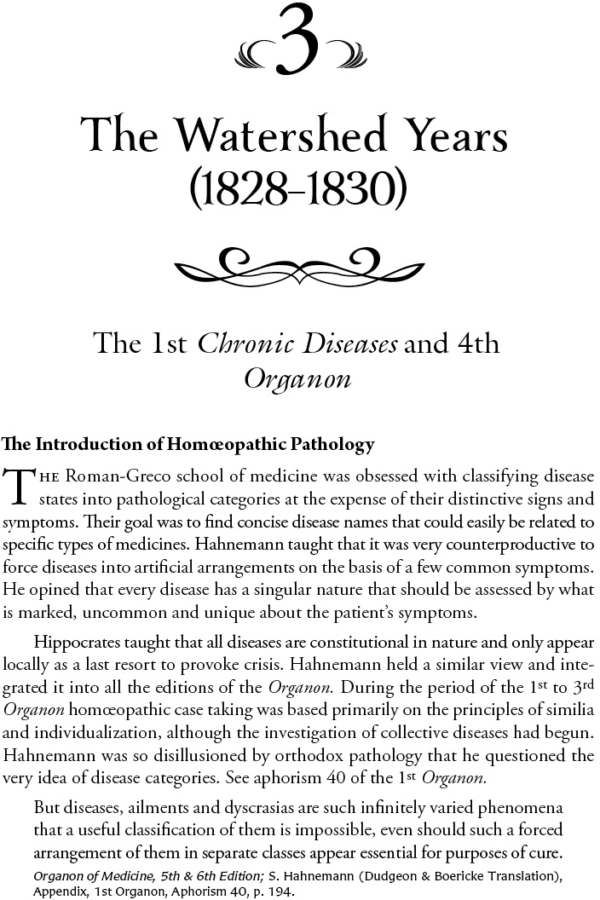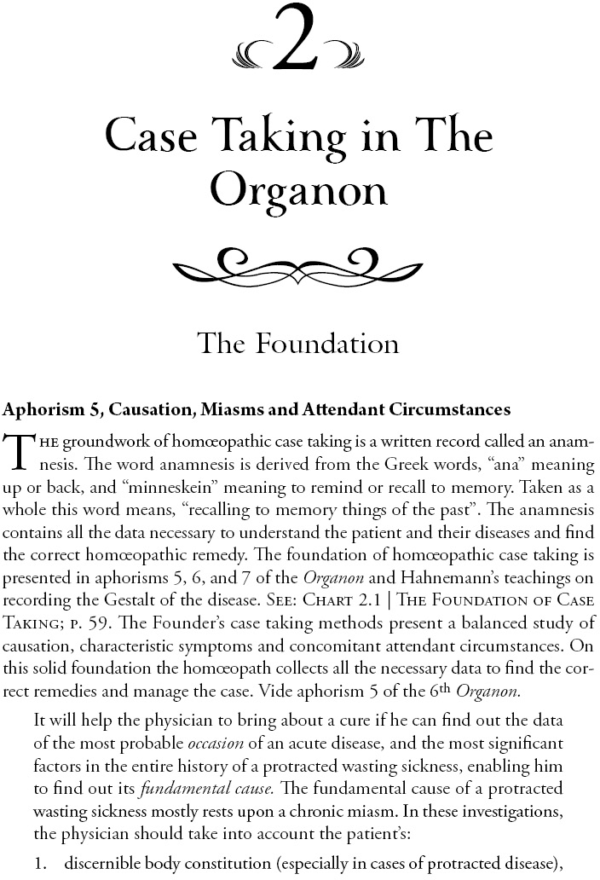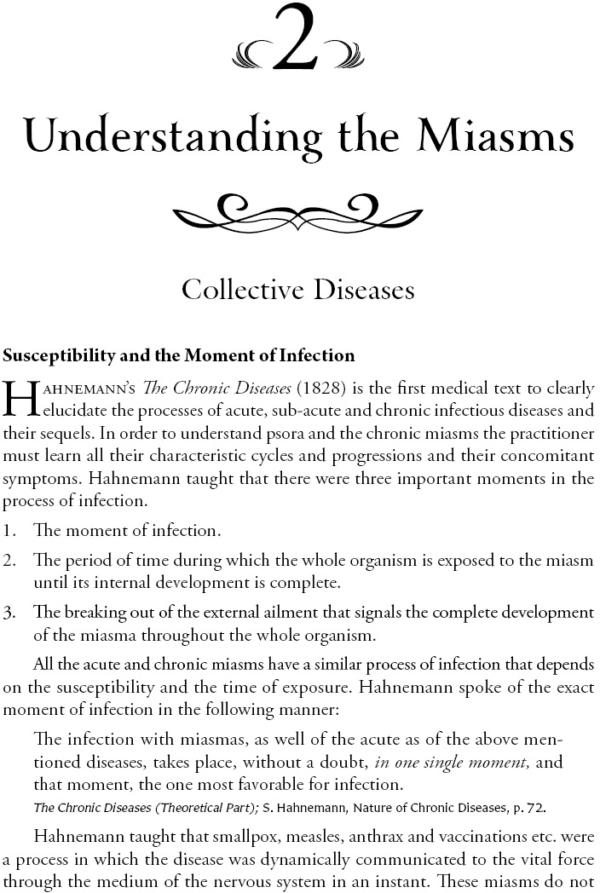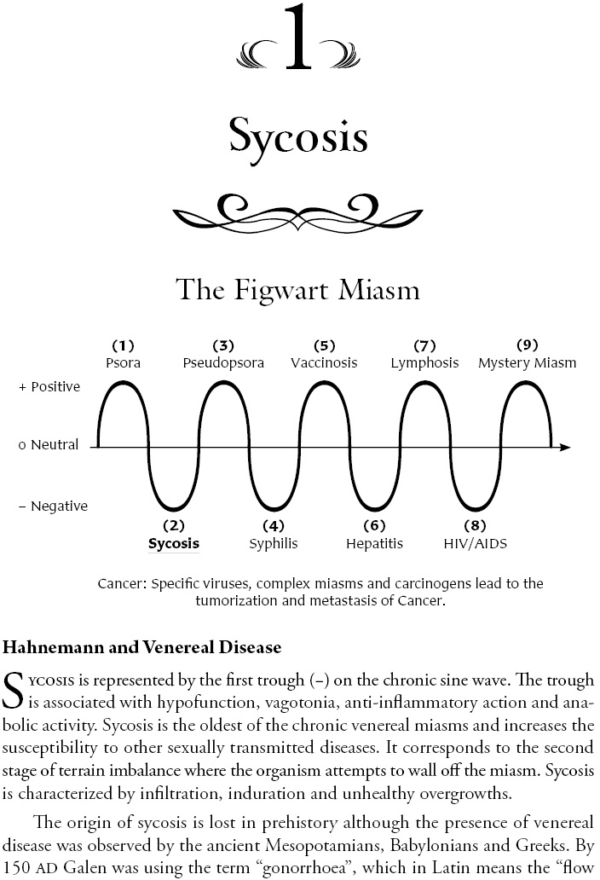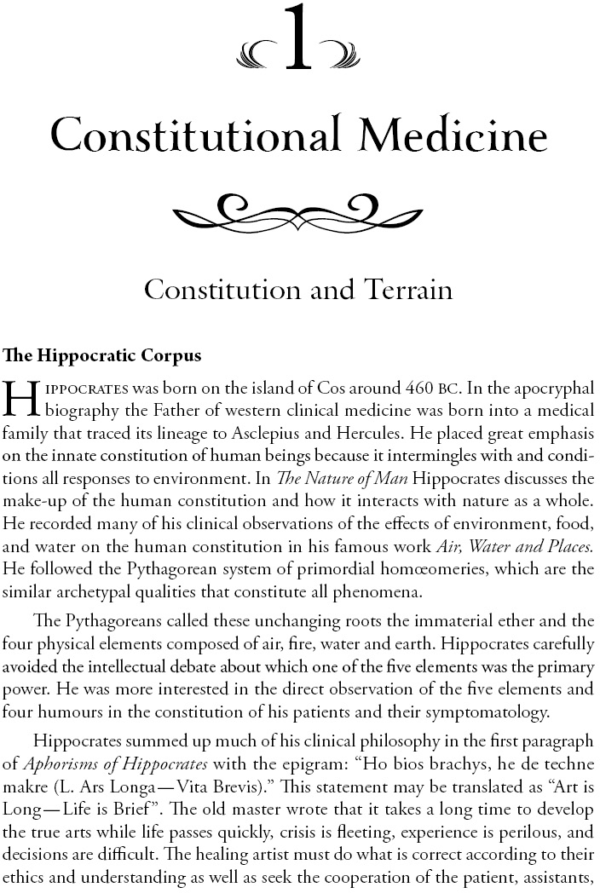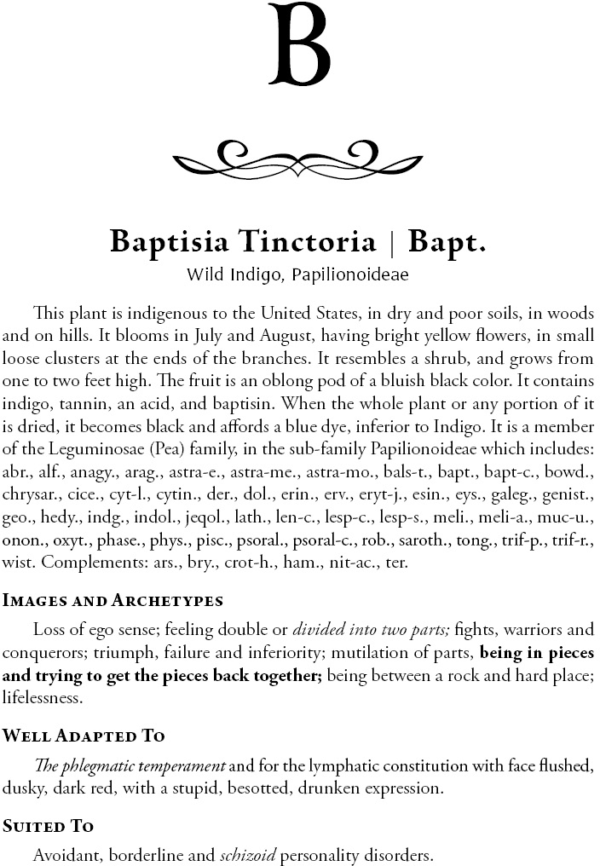Free Chapters
Download free chapters (5 Chapters & Materia Medica Extract) totalling 318 pages will introduce you to the world of The Homoeopathic Compendium.
The Homoeopathic Compendium by David Little consists of 6 volumes which cover all essential aspects of Homoeopathy. We have selected one chapter from each Volume, and an excerpt of remedy studies from Volume VI. The series covers a wide range of subjects, described in detail and with a deep insight into homeopathic principles.
From: Volume I : History and Philosophy
Chapter 3 : The Watershead Years (1828-1830)
Chapter 3: The Watershed Years (1828–1830) is a chronicle of the years during which Homoeopathy reached full maturity and Hahnemann introduced his teachings on constitution, temperament, heredity, the vital force and the chronic miasms in The Chronic Diseases. It also evaluates the methods of the 4th Organon (1829), which teaches the most evolved version of the single dose wait and watch method. These are the methods used by a majority of contemporary homoeopaths.
Number of Page: 44
From: Volume II : Repertory and Case Management
Chapter 2 : Case Talking in The Organon
Chapter 2: Case Taking in the Organon elucidates the Founder’s case taking methods, which are far more extensive than normally appreciated. This section provides practical instruction on how to record causations, miasms, signs, coincidental befallments and symptoms as well as the attending circumstances. These instructions provide the foundation of a complete case history.
Number of Pages: 58
From: Volume III : Psora and Anti-Psoric Treatment
Chapter 2 : Understanding the Miasms
Chapter 2: Understanding the Miasms evaluates the nature of acute, half-acute and chronic miasms and discusses active, latent and dormant miasms. It reviews the origin of the anti-psoric remedies and discusses the nine ways to use nosodes. It describes the seven kingdoms of microorganisms and parasites and introduces the miasmatic “sine wave” as a means to understanding the development of the chronic miasms.
Number of Pages: 62
From: Volume IV : Chronic Miasms and Cancer
Chapter 1 : Sycosis
Chapter 1: Sycosis examines the nature of the non-syphilitic venereal miasms from the classical and modern view. It looks at the correlation between sycosis and the human papilloma virus (HPV) as well as gonorrhoea Neisseria and provides therapeutic hints for HPV and gonorrheal miasms. It includes a study of the anatomy and physiology of the sycotic syndrome and the symptoms of the primary, latent-secondary and tertiary stages. On this basis, it discusses the treatment of sycosis. After a study of the psyche of sycosis and its confirmatory symptoms, the text describes the signs associated with the sycotic constitution and evaluates sycosis in the four Hippocratic temperaments. This section concludes with a detailed anamnesis of sycosis with the symptoms listed for the mind and regions of the body. It also provides a repertory rubric of anti-sycotic remedies brought up to date.
Number of Pages: 70
From: Volume V : Constitution, Temperament and Maps of Consciousness
Chapter 1 : Constitutional Medicine
Chapter 1 : Constitutional Medicine starts with an exposition of the teachings of Hippocrates on constitution and temperament and explains the system used by the Greek naturalist to assess the most common genotypes. The text examines the use of the classical four temperaments (choleric, phlegmatic, sanguine and melancholic) in Homœopathy and the materia medica. It reviews statements on the relevance of various constitutions by Hahnemann, Boenninghausen, Hering, Jahr, Kent, Allen, Roberts and Whitmont. It also provides a discussion of aphorism 5 of the Organon and its importance in the study of the whole human being and its relationship to environment.
Number of Pages: 47
From: Volume VI : Materia Medica of Psyche and Soma
Bryonia, Phosphorus, Sepia and Medorrhinum
Bryonia, Phosphorus, Sepia and Medorrhinum : The Materia Medica of Psyche and Soma describes 175 homoeopathic remedies with well-proven mental pictures. The studies highlight the psychological aspects of the remedies with their general and physical concomitants. The four examples given here are representative of the four natural kingdoms that are the source of homoeopathic remedies. Bryonia is a plant remedy, Phosphorus is a mineral remedy, Sepia is an animal remedy and Medorrhinum is a nosode. The Medorrhinum study is complementary to the free Chapter 1: Sycosis from Volume IV.
Number of Pages: 37
